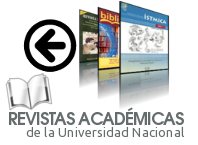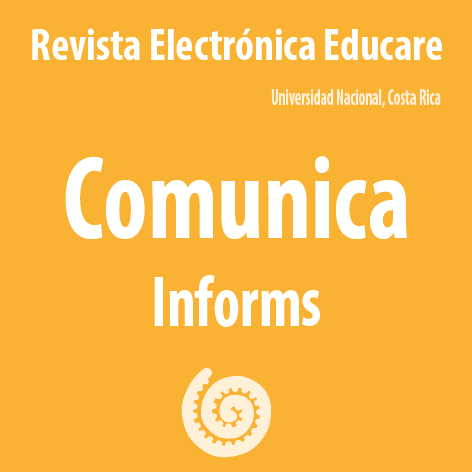Understanding Parents’ Perceptions of Children’s Physical Activity
DOI:
https://doi.org/10.15359/ree.23-2.16Keywords:
physical activity, social support, barriers, children, mothers' perceptionAbstract
Currently, there is little research on mothers’ perceptions of the social support they provide for their children to be physically active, which could yield important information in the construction of interventions that promote active lifestyles in childhood. We conducted individual interviews and three focus groups with 15 mothers of children 6 to 8 years old. The data were thematically analyzed using a qualitative approach, applying Ecological Model constructs to guide coding and categorization of results and the discussion of these results. The majority of mothers acknowledged that their sons and daughters were relatively less active and indicated that they perceived a need for increased physical activity among their children. The use of social support strategies was minimal, limited to accompanying their children. Mothers reported environmental factors such as cost, time constraints, lack of extracurricular-community activities and unsafe environments as the main barriers to their children’s physical activity. This study generated three main categories of results: the information gathered following the ecological model as a framework for analysis generated suggests that mothers are not aware of lack of physical activity of their children; mothers do not know ways to use social support for active lifestyles in their children, and recognize barriers to increase children’s physical activity. These research findings may contribute to health promotion strategies and programs that educate parents on how to effectively support their child in developing an active style of life.
References
Álvarez, C. (2016). Entendiendo los factores que determinan la actividad física en el entorno escolar desde la perspectiva de los niños y niñas. MHSalud, 13(1), 1-17. doi: https://doi.org/10.15359/mhs.13-1.2
Beets, M. W., Cardinal, B. J., & Alderman, B. L. (2010) Parental social support and the physical activity-related behaviors of youth: A review. Health Education & Behavior, 37(5), 621-644. doi: https://doi.org/10.1177/1090198110363884
Bentley, G. F., Goodred, J. K., Jago, R., Sebire, S. J., Lucas, P. J., Fox, K. R., … Turner, K. M. (2012). Parents’ views on child physical and their implications for physical activity parenting interventions: A qualitative study. BMC Pediatrics, 12(180), 1-9. doi: https://doi.org/10.1186/1471-2431-12-180
Boise, J. E., Sarrazin, P. G., Brustad, R. J., Trouilloud, D. O., & Cury, F. (2005). Elementary schoolchildren’s perceived competence and physical activity involvement: The influence of parents? role modeling behaviours and perceptions of their child’s competence. Psychology of Sport and Exercise, 6(4), 381-397. doi: https://doi.org/10.1016/j.psychsport.2004.03.003
Carson, V., Clark, M., Berry, T., Holt, N. L., & Latimer-Cheung, A. E. (2014). A qualitative examination of the perceptions of parents on the canadian sedentary behaviour guidelines for the early years. International Journal of Behavioral Nutrition and Physical Activity, 11, 65-70. doi: https://doi.org/10.1186/1479-5868-11-65
Darbyshire, P., MacDougall, C., & Schiller, W. (2005). Multiple methods in qualitative research with children: More insight or just more? Qualitative Research, 5(4), 417-436. Dpi: https://doi.org/10.1177/1468794105056921
Davison, K. K., Masse, L. C., Timperio, A., Frenn, M. D., Saunders, J., Mendoza,.J. A., … Trost, S. G. (2013). Physical activity parenting measurement and research: Challenges, explanations, and solutions. Childhood Obesity, 9(Suppl. 1), S-103-S109. doi: https://doi.org/10.1089/chi.2013.0037
De Lepeleere, S., De Smet, A., Verloigne, M, Cardon G., De Bourdeaudhuij, I. (2013). What practices do parents perceive as effective or ineffective in promoting a healthy diet, physical activity, and less sitting in children: Parent focus groups. BMC Public Health, 13(1067), 1- 11. doi: https://doi.org/10.1186/1471-2458-13-1067
Fairclough S. J., Boddy L. M., Mackintosh K. A., Valencia-Peris A., & Ramirez-Rico, E. (2015). Weekday and weekend sedentary time and physical activity in differentially active children. Journal of Science and Medicine in Sport, 18(4), 444-449. doi: https://doi.org/10.1016/j.jsams.2014.06.005
Kimiecik, J. C, & Horn, T. S. (2012). Examining the relationship between family context and children’s physical activity beliefs: The role of parenting style. Psychol of Sport Exerc, 13(1), 10-18. doi: https://doi.org/10.1016/j.psychsport.2011.08.004
LeBlanc, A. G., Spence, J. C., Carson, V., Connor, S., Dillman, C., Janssen, I., … Tremblay, M. S. (2012). Systematic review of sedentary behaviour and health indicators in the early years (aged 0–4 years). Appl Physiol Nutr Metab, 37(4), 753-772. doi: https://doi.org/10.1139/h2012-063
Lox, C., Martin, K. A., & Petruzzello, S. J. (2006). The psychology of exercise. Arizona: Holcomb Hathaway.
Marcus, B. H. & Forsyth, L. H. (2003). Motivating people to be physically active. Champaign, IL: Human Kinetics.
McMinn, A. M., Griffin, S. J., Jones, A. P., & Van Sluijs, E. M. F. (2013) Family and home influences on children’s after-school and weekend physical activity. European Journal of Public Health, 23(5), 805-810. doi: https://doi.org/10.1093/eurpub/cks160
Nyberg, G., Sundblom, E., Norman, A., Bohman, B., Hagberg, J., & Elinder, L. S. (2015). Effectiveness of a universal parental support programme to promote healthy dietary habits and physical activity and to prevent overweight and obesity in 6 year-old children: The healthy school start study, a cluster-randomised controlled trial. Plos One, 10(2), 1-19. doi: https://doi.org/10.1371/journal.pone.0116876
Patton, M. Q. (2002). Qualitative research and evaluation methods (3a ed.). Thousand Oaks, CA: Sage.
Peterson, M. S., Lawman, H. G., Fairchild, A., Wilson, D. K., & Van Horn, L. (2013). The association of self-efficacy and parent social support on physical activity in male and female adolescents. Health Psychology, 32(6), 666-674. doi: https://doi.org/10.1037/a0029129
Pitney, W. A. & Parker, J. (2009). Qualitative Research in physical activity and the health professions. Champaign, IL: Human Kinetics.
Pugliese, J, & Tinsley, B. (2007). Parental socialization of child and adolescent physical activity: A meta-analysis. Journal of Family Psychology, 21(3) 331-343. doi: https://doi.org/10.1037/0893-3200.21.3.331
REACH. (2014). Parental influence on children’s physical activity motivation. Arizona: UM.
Santaliestra-Pasías, A. M., Rey-López, J. P., & Moreno, L. A. (2013). Obesity and sedentarism in children and adolescents: What should be done. Nutriión Hospitalaria, 28(Supl. 5), 99-104. doi: https://doi.org/10.3305/nh.2013.28.sup5.6924
Shen, B., Centeio, E., Garn, A., Martin, J., Kulik, N., Somers, C., & McCaughtry, N. (2016). Parental social support, perceived competence and enjoyment in school physical activity. Journal of Sport and Health Science, 20, 1-7. doi: https://doi.org/10.1016/j.jshs.2016.01.003
Tappe, K. A., Glanz, K., Sallis, J. F., Zhou, C., & Saelens, B. E. (2013). Children’s physical activity and parents’ perception of the neighborhood environment: Neighborhood impact on kids study. Internacional Journal of behavioral, Nutrition and Physical Activity, 10(39), 1-10. doi: https://doi.org/10.1186/1479-5868-10-39
Timmons, B. W., LeBlanc, A. G., Carson, V., Connor, S., Dillman, C., Janssen, I., … Mark, S. (2012). Systematic review of physical activity and health in the early years (aged 0-4 years). Appl. Physiol. Nutr. Metab, 37, 773-792. doi: https://doi.org/10.1139/h2012-070
Trigwell, J., Murphy, R. C., Cable, N. T., Stratton, G., & Watson, P. M. (2015). Parental views of children’s physical activity: A qualitative study with parents from multi-ethnic backgrounds living in England. BMC Public Health, 15(1), 1015-1020. doi: https://doi.org/10.1186/s12889-015-2351-8
Ward, D., Saunders, R., & Pate, R. (2007). Physical activity interventions in children and adolescents. Birmingham, AL: Human Kinetics.
Watkinson, C., van Sluijs, E. M., Sutton, S., Marteau T., & Griffin S. J. (2010). Randomised controlled trial of the effects of physical activity feedback on awareness and behaviour in UK adults: The FAB study protocol. BMC Publ Health, 10(144), 1-10. doi: https://doi.org/10.1186/1471-2458-10-144
Downloads
Published
How to Cite
Issue
Section
License
1. In case the submitted paper is accepted for publication, the author(s) FREELY, COSTLESS, EXCLUSIVELY AND FOR AN INDEFINITE TERM transfer copyrights and patrimonial rights to Universidad Nacional (UNA, Costa Rica). For more details check the Originality Statement and Copyright Transfer Agreement
2. REUTILIZATION RIGHTS: UNA authorizes authors to use, for any purpose (among them selfarchiving or autoarchiving) and to publish in the Internet in any electronic site, the paper´'s final version, both approved and published (post print), as long as it is done with a non commercial purpose, does not generate derivates without previous consentment and recognizes both publisher's name and authorship.
3. The submission and possible publication of the paper in the Educare Electronic Journal is ruled by the Journal’s editorial policies, the institutional rules of Universidad Nacional and the laws of the Republic of Costa Rica. Additionally, any possible difference of opinion or future dispute shall be settled in accordance with the mechanisms of Alternative Dispute Resolution and the Costa Rican Jurisdiction.
4. In all cases, it is understood that the opinions issued are those of the authors and do not necessarily reflect the position and opinion of Educare, CIDE or Universidad Nacional, Costa Rica. It is also understood that, in the exercise of academic freedom, the authors have carried out a rogorous scientific-academic process of research, reflection and argumentation thar lays within the thematic scope of interest of the Journal.
5. The papers published by Educare Electronic Journal use a Creative Commons License:
















 The articles published by Educare Electronic Journal can be shared with a Creative Commons License:
The articles published by Educare Electronic Journal can be shared with a Creative Commons License: 



